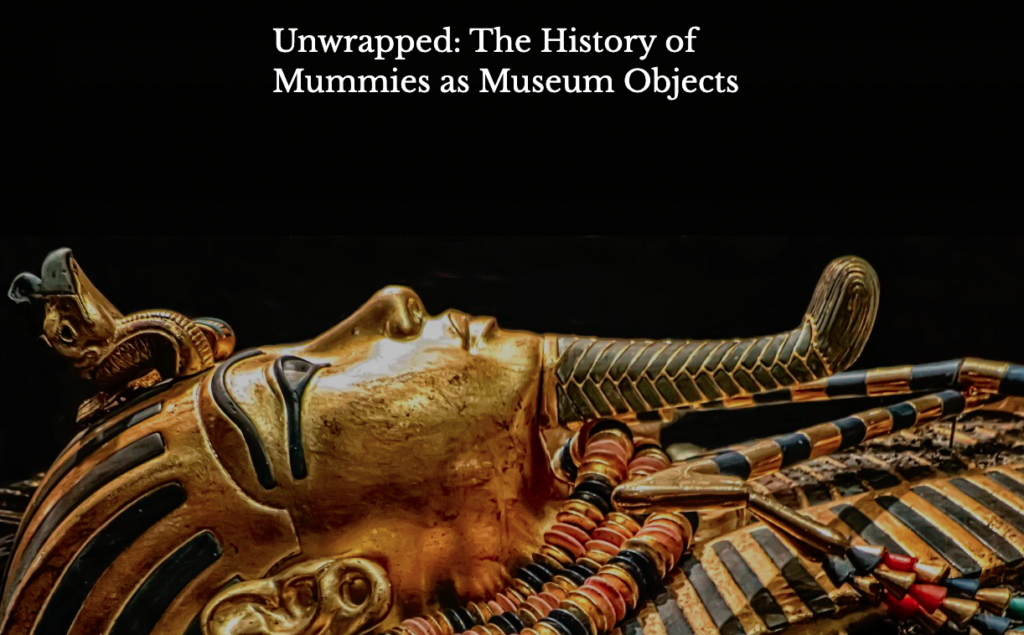View “Unwrapped: The History of Mummies as Museum Objects” by Lyric Lott ’21
Since their inception likely over 5,000 years ago, Egyptian mummies have captured the awe of generations across the world. In many modern museums, such as the British Museum, The Louvre, and the Metropolitan Museum of Art, exhibitions of mummified ancient Egyptians and their remains are some of the most popular and frequently-visited collections of artifacts and art. The barely-comprehensible age, intricate decorations, and death-defying nature of mummies captures the attention of millions of museum visitors every year.
But how did museums come to display mummies in the first place? In a world where death is often feared and funerary rites and practices are treated with care, how have museums come to display the remains of a society with some of the strictest codes of conduct surrounding death known in history? And is it right to display mummies at all?
This timeline outlines a brief history of the display of mummies in the museum space, beginning with their creation in ancient Egypt to the future of human remains exhibition in the most cutting-edge museums around the world. Click below to learn more about this complex history.
